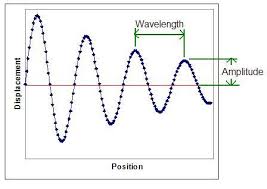(Updated on 17/3/2013, Tues):
Damping:
a.
A body oscillating freely at its natural
frequency but with decreasing amplitude is said to experience damping:

b.
Damping
occurs in an oscillating system when the system loses energy resulting
in the
decrease in amplitude but not the frequency of the oscillation.
c.
Examples: A pendulum swinging freely or a loaded spring
oscillating freely in a non-vacuum environment will see the amplitude
of its swing or oscillation gradually decreases (while the frequency
remains
unchanged) until the swinging or oscillation stops.
d.
When damping occurs, energy is lost in 2
possible ways:
i.
To overcome frictional forces or air resistance
– External damping;
ii.
Due to the extension or compression of the
vibrating particles – Internal damping.
e.
To overcome
damping, external force must be applied (thus energy is supplied) to
keep
the amplitude from decreasing. Such an oscillation is called forced
oscillation.
No comments:
Post a Comment